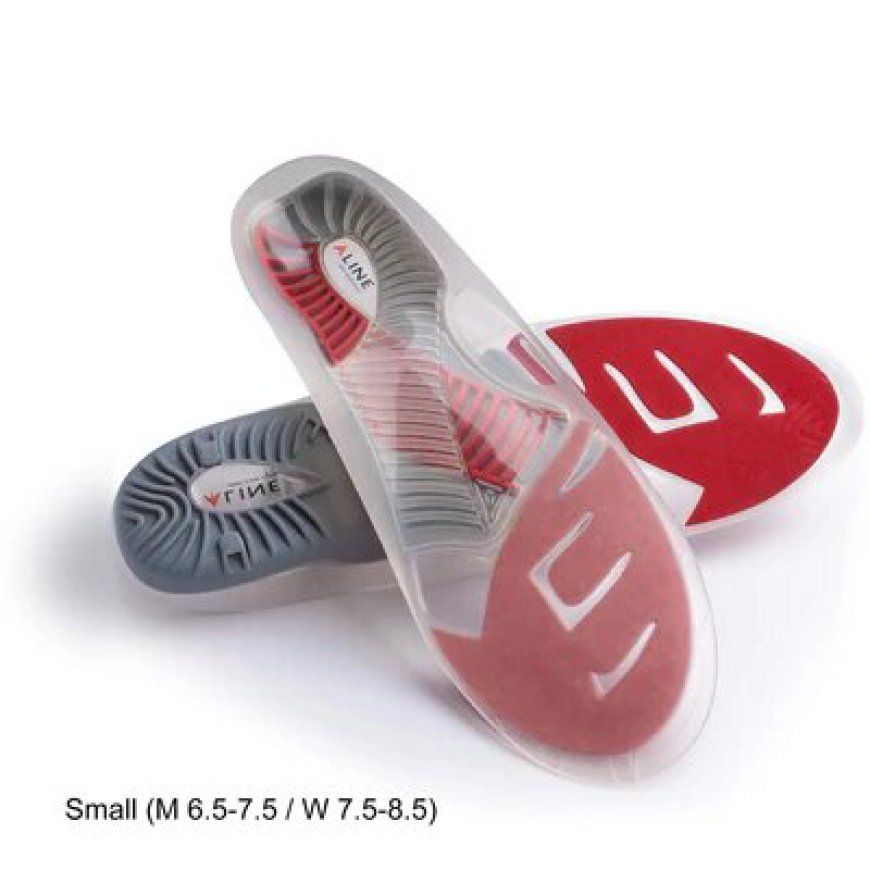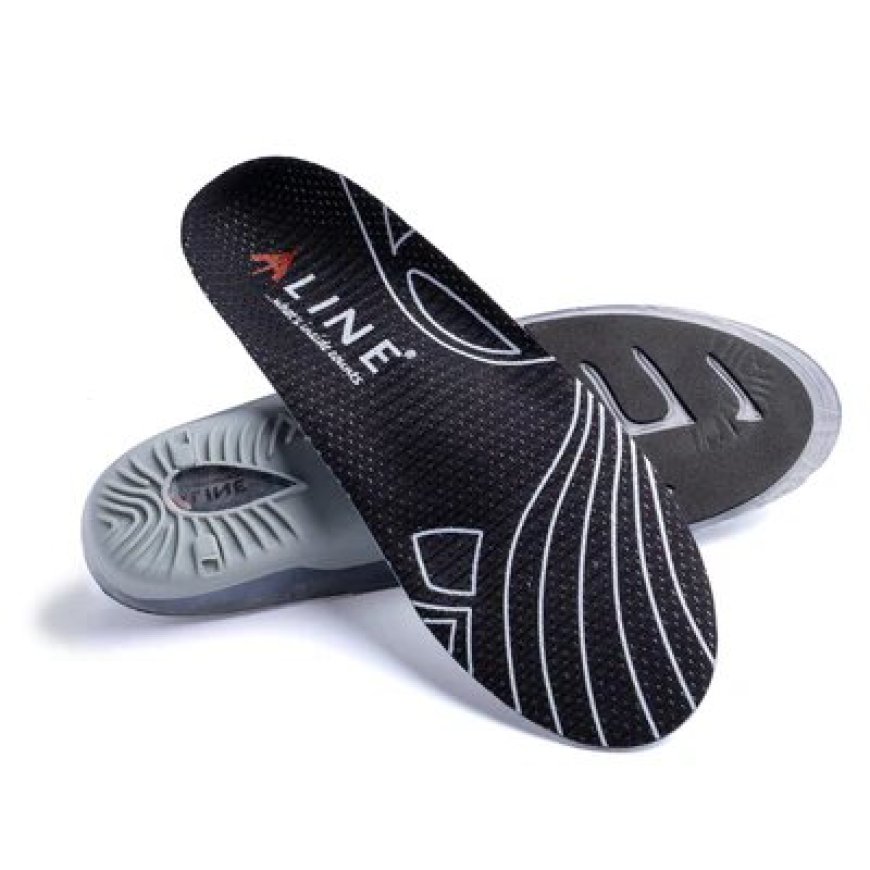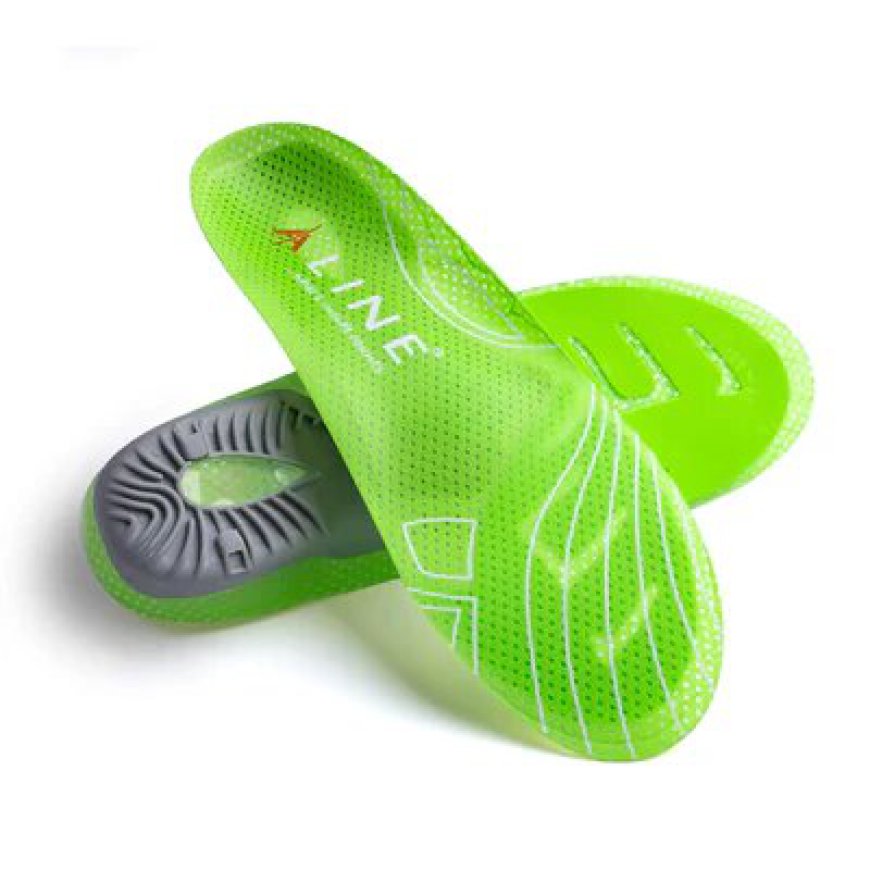Worlds Most Advanced Orthotic Shoe Insoles & Shoe Inserts Aline Insole
Enhance your every step with ALINE INSOLES - the ultimate orthotic shoe inserts for unparalleled comfort and support. Walk pain-free!

Insoles for Shoes:
Everything You Need to Know When it comes to making your insoles for shoes more comfortable, shoe insoles are a straightforward but highly effective remedy. Whether you are strolling, standing, or running, having the right sets of insoles can have a major effect. But what are insoles exactly and why should you think about using them? In this article, we'll go over everything you need to know about shoe insoles and how they can help you feel and look better on your feet in general.

What Are Insoles for Shoes?
Shoes have removable inserts called insoles, which are also known as footbeds or inner soles. They are made to give your feet more cushioning, support, and comfort. Insoles come in different shapes, sizes, and materials to address various issues. Whether you have level feet, high curves, or experience the ill effects of foot torment, there are insoles for shoes explicitly made to resolve those issues.
There are many different kinds of shoe insoles, and each one has its own set of advantages. You can choose the right insole for your needs by understanding the various types. The most common types of insoles are as follows:
Padding Insoles: These are planned basically for solace. They offer additional cushioning and are perfect for individuals who stand or stroll for significant stretches. Soft materials like foam or gel are used in cushioning insoles for shoes, which help to absorb shock and lessen the impact on your feet.
Soles with Arch Support: These insoles for shoes are ideal for people with high arches or flat feet. Curve support insoles assist with conveying your body weight equally across your feet, lessening weight on your curves and forestalling foot torment.
Orthotic Insoles: Overpronation (when your feet roll inward too much) and supination (when your feet roll outward) are two common foot conditions that can be alleviated with orthotic insoles. A podiatrist can make these shoe insoles, which provide more structure and support than standard insoles and can be tailored to your specific foot requirements.
Soles for sports: Sports insoles for shoes are beneficial for active people and athletes. These insoles are made to give both solace and steadiness during high-influence exercises like running, hopping, or playing sports. They typically highlight additional padding in regions that experience the most tension.
Gel Footbeds: Gel insoles for shoes are well known for their capacity to ingest shock and give a smooth, padded feel. People who have joint pain or spend a lot of time on their feet will benefit most from these.
Further developed Solace: The essential explanation individuals use insoles for shoes is to upgrade the solace. By reducing pressure on your feet and providing additional padding and support, insoles make walking, standing, or running much more pleasurable.
Better Foot Backing: Shoes with insoles, especially those with arch support, can help you stand up straighter and keep your feet in the right position. insoles for shoes prevent common problems like arch pain, heel pain, and discomfort caused by improper foot positioning by supporting the natural structure of your foot.
Absorption of Shock: Whether you are a sprinter, competitor, or somebody who strolls a great deal, the shock from raising a ruckus around town more than once can harm your joints and muscles. Shoes with insoles assist in absorbing this shock, minimizing the impact on your hips, knees, and lower back.
Foot Relief from discomfort: Assuming you experience the ill effects of conditions like plantar fasciitis, heel prods, or metatarsalgia, insoles for shoes can give alleviation. By rearranging the strain on your feet and offering designated help, insoles can mitigate agony and assist you with recuperating all the more rapidly.
Preventing Injuries: Shoes with insoles can offer additional stability and support, which can help prevent injuries. For instance, sprinters who use insoles are more averse to encountering pressure breaks or tendonitis since insoles lessen the stress on their feet and legs.
Better Shoe Fit: Insoles for shoes can be helpful if your shoes are slightly too big or don't fit as well as you would like. They give your feet a better and more secure fit while also taking up additional space inside your shoes.
How to Select the Best Shoe Insoles:
Choosing the best shoe insoles can be challenging, especially with so many options available. The following are a couple of interesting points while choosing the right insoles for your requirements.
Type of Foot: Do you have level feet, high curves, or unbiased curves? The sort of foot you have will decide the sort of insole you want. Arch support is typically required by people with flat feet, whereas cushioning and stability are beneficial to those with high arches.
Movement Level: Ponder what exercises you do most frequently. Sports insoles for shoes might be the best option for athletes while cushioning insoles might be better for people who stand for a lot of time.
Problems with the feet: Assuming you have explicit foot issues like plantar fasciitis or overpronation, search for insoles for shoes that are intended to resolve those issues. Orthotic insoles are frequently suggested for more serious foot conditions.
Material: Insoles for shoes come in various materials like froth, gel, and cowhide. Gel insoles are better at absorbing shock than foam insoles, which provide cushioning and softness. Leather insoles can be a good option for everyday shoes due to their durability.
Size: Try to pick the right size of insoles for your shoes. Insoles that are too small won't offer the help you want, while insoles that are too huge may not fit as expected inside your shoes. Some insoles are made to be cut to the exact size of your shoes.
How to Maintain Your Shoe Insoles:
Once you have selected the ideal shoe insoles, it is essential to maintain them so that they last as long as possible. To keep your insoles in good condition, follow these guidelines.
Frequently Get Rid of Them: After wearing your shoes, remove the insoles to allow air to circulate. This stops moisture buildup, which can cause bacterial growth and odors.
Purify Them: Clean your insoles routinely, particularly assuming that they get filthy or sweat-soaked. The majority of shoe insoles can be cleaned with mild soap and a damp cloth. Before putting them back in your shoes, be sure to let them dry completely.
Replace Them As Required: Similar to footwear, insoles degrade over time. Assuming you notice that your insoles are losing their padding or backing, now is the right time to supplant them. All things considered, insoles last around 6 a year, contingent upon use.

End:
Insoles for shoes are a straightforward and reasonable method for working on the solace, backing, and general strength of your feet. Whether you're hoping to ease foot torment, forestall wounds, or essentially make your shoes more agreeable, the right sets of insoles can have a significant effect. You can find the ideal shoe insoles to keep your feet happy and healthy throughout the day if you know what kinds of insoles are available and take your specific requirements into account.
